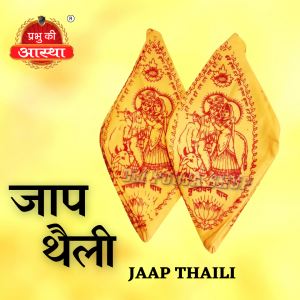PUJA ITEMS
-
 Read more
Read moreMouli Kalawa, also known as Moli or Mauli, is a sacred thread used in Hinduism and is an essential part of many religious ceremonies. It is usually made of cotton or silk and is tied on the wrist of the person performing the puja or the person for whom the puja is being performed.
The Mouli Kalawa is considered as a symbol of protection, good fortune, and purity. It is believed that tying the thread on the wrist wards off negative energies and evil spirits and brings good luck and prosperity to the person wearing it.
During religious ceremonies or puja, the priest or the elder family member ties the thread on the right wrist of men and the left wrist of women while chanting mantras and prayers. The thread is usually tied in multiple loops, and the length of the thread varies depending on the region and tradition.
In addition to religious ceremonies, the Mouli Kalawa is also tied during special occasions such as weddings, childbirth, and other auspicious events. It is considered auspicious to wear the thread until it falls off naturally, which is believed to happen when the blessings of the deity or the occasion have been fulfilled.
In conclusion, Mouli Kalawa holds great significance in Hinduism and is an integral part of many religious and cultural ceremonies. It is a symbol of protection, good fortune, and purity and is believed to bring blessings and prosperity to the wearer.
-
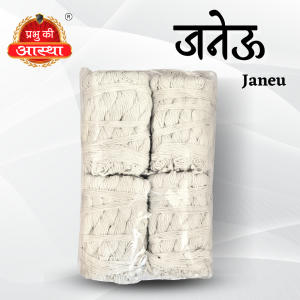 Read more
Read moreMouli Kalawa, also known as Moli or Mauli, is a sacred thread used in Hinduism and is an essential part of many religious ceremonies. It is usually made of cotton or silk and is tied on the wrist of the person performing the puja or the person for whom the puja is being performed.
The Mouli Kalawa is considered as a symbol of protection, good fortune, and purity. It is believed that tying the thread on the wrist wards off negative energies and evil spirits and brings good luck and prosperity to the person wearing it.
During religious ceremonies or puja, the priest or the elder family member ties the thread on the right wrist of men and the left wrist of women while chanting mantras and prayers. The thread is usually tied in multiple loops, and the length of the thread varies depending on the region and tradition.
In addition to religious ceremonies, the Mouli Kalawa is also tied during special occasions such as weddings, childbirth, and other auspicious events. It is considered auspicious to wear the thread until it falls off naturally, which is believed to happen when the blessings of the deity or the occasion have been fulfilled.
In conclusion, Mouli Kalawa holds great significance in Hinduism and is an integral part of many religious and cultural ceremonies. It is a symbol of protection, good fortune, and purity and is believed to bring blessings and prosperity to the wearer.
-
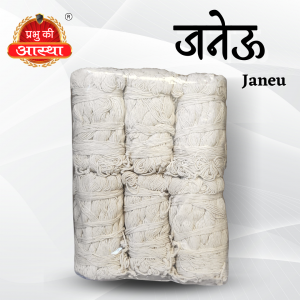 Read more
Read moreMouli Kalawa, also known as Moli or Mauli, is a sacred thread used in Hinduism and is an essential part of many religious ceremonies. It is usually made of cotton or silk and is tied on the wrist of the person performing the puja or the person for whom the puja is being performed.
The Mouli Kalawa is considered as a symbol of protection, good fortune, and purity. It is believed that tying the thread on the wrist wards off negative energies and evil spirits and brings good luck and prosperity to the person wearing it.
During religious ceremonies or puja, the priest or the elder family member ties the thread on the right wrist of men and the left wrist of women while chanting mantras and prayers. The thread is usually tied in multiple loops, and the length of the thread varies depending on the region and tradition.
In addition to religious ceremonies, the Mouli Kalawa is also tied during special occasions such as weddings, childbirth, and other auspicious events. It is considered auspicious to wear the thread until it falls off naturally, which is believed to happen when the blessings of the deity or the occasion have been fulfilled.
In conclusion, Mouli Kalawa holds great significance in Hinduism and is an integral part of many religious and cultural ceremonies. It is a symbol of protection, good fortune, and purity and is believed to bring blessings and prosperity to the wearer.
-
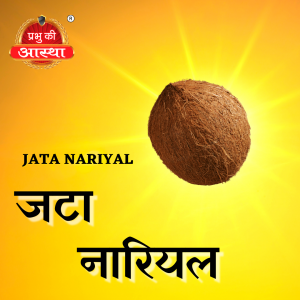 Read more
Read morejata Nariyal, also known as the coconut with locks of hair, is a rare and unique variety of coconut found in India. The coconut has a natural growth of fiber resembling long hair or locks, hence the name “jata” meaning locks and “nariyal” meaning coconut. Jata Nariyal is considered to be very auspicious and is…
-
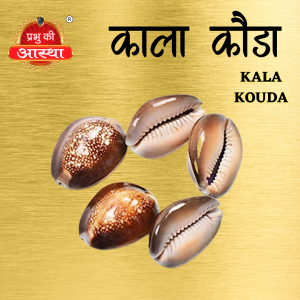 Read more
Read moreBlack Kaudi, also known as Black Cowrie, is a type of sea shell that holds great significance in Hinduism and is used in various religious rituals and ceremonies.
In Hinduism, Black Kaudi is believed to be a symbol of Goddess Mahalakshmi, the Hindu goddess of wealth, fortune, and prosperity. It is often used in pujas and other religious ceremonies to invoke the blessings of the goddess.
During puja, black kaudi is usually placed on a decorated tray along with other sacred objects and offerings. It is believed to be a potent talisman for attracting good luck, wealth, and prosperity. It is also believed to have protective properties and is often used to ward off negative energies and evil spirits.
Apart from its spiritual significance, black kaudi is also believed to have healing properties. It is often used in Ayurvedic medicine to treat various ailments such as headaches, eye problems, and skin diseases.
In addition to being used in Hinduism, black kaudi is also used in various other cultures and traditions around the world. In many African cultures, it is used as currency and as a symbol of good luck and prosperity.
Overall, black kaudi is a powerful symbol of spirituality and prosperity in Hinduism. It is believed to have healing and protective properties and is an important component of many religious rituals and ceremonies.
-
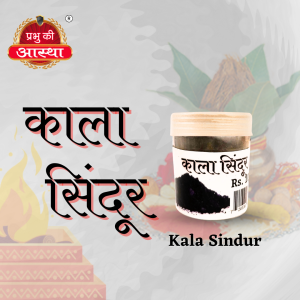 Read more
Read moreKala Sindur, also known as black vermilion, holds a special place in Hindu rituals and spiritual practices. Unlike the traditional red sindur, Kala Sindur is deep black or dark maroon in color and is considered a powerful symbol of divine energy and protection. It is primarily used in Tantric rituals and is associated with fierce…
-
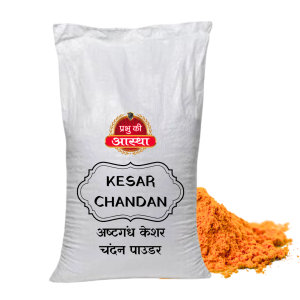 Read more
Read moreKesar Chandan powder is a sacred powder that is often used in Hindu religious ceremonies, known as pujas, which are believed to have purifying and sacred properties. Kesar Chandan powder is used to create a fragrant paste that is applied to the forehead, known as a tilak, to invoke blessings from the deities. The powder…
-
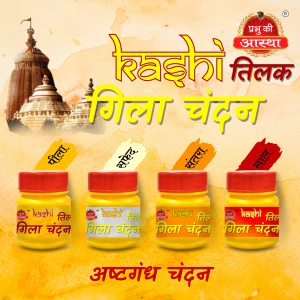 Read more
Read moreKesar Chandan is a sacred powder that is often used in Hindu religious ceremonies, known as pujas, which are believed to have purifying and sacred properties. Kesar Chandan is used to create a fragrant paste that is applied to the forehead, known as a tilak, to invoke blessings from the deities. The paste is also used to make a variety of offerings, such as incense sticks and lamps, which are believed to help create a sacred atmosphere and connect with the divine. In addition to its use in religious ceremonies, Kesar Chandan paste is also used in traditional Ayurvedic medicine for its various health benefits. However, it is important to note that the paste is intended for external use only and should not be ingested. Kesar Chandan paste remains an important part of Hindu culture and spirituality and is widely used in religious and spiritual practices.
-
 Read more
Read moreKesar Chandan powder is a sacred powder that is often used in Hindu religious ceremonies, known as pujas, which are believed to have purifying and sacred properties. Kesar Chandan powder is used to create a fragrant paste that is applied to the forehead, known as a tilak, to invoke blessings from the deities. The powder is also used to make a variety of offerings, such as incense sticks and lamps, which are believed to help create a sacred atmosphere and connect with the divine. In addition to its use in religious ceremonies, Kesar Chandan powder is also used in traditional Ayurvedic medicine for its various health benefits. However, it is important to note that the powder is intended for external use only and should not be ingested. Kesar Chandan powder remains an important part of Hindu culture and spirituality and is widely used in religious and spiritual practices.
-
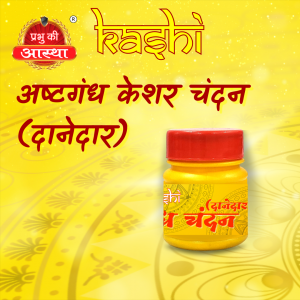 Read more
Read moreKesar Chandan powder is a sacred powder that is often used in Hindu religious ceremonies, known as pujas, which are believed to have purifying and sacred properties. Kesar Chandan powder is used to create a fragrant paste that is applied to the forehead, known as a tilak, to invoke blessings from the deities. The powder is also used to make a variety of offerings, such as incense sticks and lamps, which are believed to help create a sacred atmosphere and connect with the divine. In addition to its use in religious ceremonies, Kesar Chandan powder is also used in traditional Ayurvedic medicine for its various health benefits. However, it is important to note that the powder is intended for external use only and should not be ingested. Kesar Chandan powder remains an important part of Hindu culture and spirituality and is widely used in religious and spiritual practices.
-
 Read more
Read moreRui Jyot Baati is a traditional Indian lamp made of cotton wicks and ghee or oil. It is commonly used in Hindu households for various auspicious occasions and religious ceremonies.
The lamp is made by rolling cotton wicks in ghee or oil and placing them in a small clay or metal lamp. The wicks are then lit, producing a bright flame that illuminates the surrounding area. The lamp is considered to be a symbol of divine light and is believed to bring good fortune and prosperity.
Rui Jyot Baati is often used in puja rituals and is considered to be an essential part of the worship. It is believed that lighting the lamp creates a positive and sacred environment that helps to connect with the divine.
In addition to its spiritual significance, Rui Jyot Baati is also used for its aesthetic value. The lamp creates a warm and inviting atmosphere and is often used to decorate homes during festivals and other celebrations.
Overall, Rui Jyot Baati holds great cultural and spiritual significance in Hinduism and is an integral part of many religious and cultural traditions.


